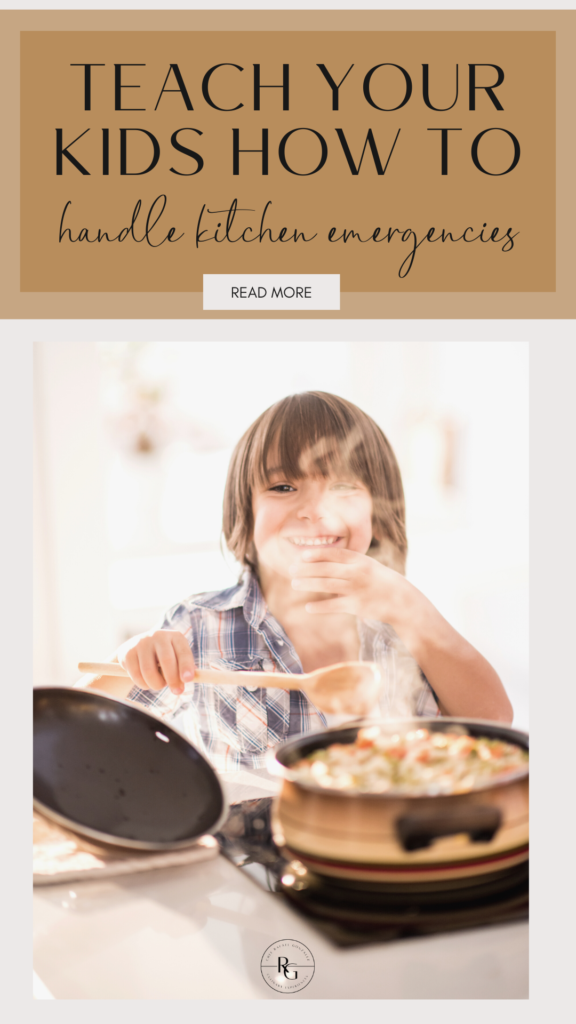
When I ask parents why they haven’t taught their teens to cook, they explain that they’re afraid. Cooking is dangerous! What if their child got hurt or caused an accident? There are three most common kitchen emergencies we should be able to handle with confidence and in this post, I’m sharing how you can teach your kids to manage them like a pro.
This fear of letting children do real work is unique to our country. As Montessori parents know, with proper tools, even very young children can learn to use sharp knives, stir things on the stove, and carry food to the table. In other countries, children are expected to help prepare and cook family meals. It allows one to be a part of the family food culture and to engage in meaningful work.
It’s natural for us to be nervous when we introduce our children to a new, potentially dangerous activity. From the hockey rink to the rock climbing course, every day parents hold their breath and let their kids reach their limits. Cooking isn’t that different from these sports. We prepare our children for emergencies, but we let them have the space they need to try, fail, and ultimately reach their potential.
Here are three of the most common kitchen emergencies, and how to prepare for them.
Kitchen Emergency 1: Fire!!
It happens to everyone at least once in their lives. You’re cooking, your attention wanders a bit, and the next thing you know, the pot or pan is on fire!
To deal with a kitchen fire:
· DON’T PANIC!
· If help is available, call for help
· Turn off the stove (to prevent fire)
· Rinse your cut in warm water
· Make sure the cut is clean. If there is food in it, remove it.
· Sit down.
· Apply direct pressure
· Drink a sugary drink or eat a piece of candy to prevent shock.
· For a serious cut, go to ER or Urgent Care
· For a minor cut, apply direct pressure and elevate
· When the bleeding stops or slows, use a bandaid
· Keep the wound dry while it has a bandage
· If there are signs of infection during the healing process, seek medical help.
Most kitchen fires are small and easy to deal with. Practice with your child before they start cooking so that the steps of covering the fire and removing the heat source become automatic. When your child keeps a calm, cool head, fire is unlikely to spread.
Kitchen Emergency 2: Knife Wounds
Most professional chefs have seriously wounded themselves with a knife at least once. You can prevent knife wounds at home by teaching your child the proper way to cut and by only using sharp knives. (Dull knives are more likely to slip and cause injury.)
Still, cuts happen. So what should you teach your child to do?
· DON’T PANIC!
· If help is available, call for help
· Turn off the stove (to prevent fire)
· Rinse your cut in warm water
· Make sure the cut is clean. If there is food in it, remove it.
· Sit down.
· Apply direct pressure
· Drink a sugary drink or eat a piece of candy to prevent shock.
· For a serious cut, go to ER or Urgent Care
· For a minor cut, apply direct pressure and elevate
· When the bleeding stops or slows, use a bandaid
· Keep the wound dry while it has a bandage
· If there are signs of infection during the healing process, seek medical help.
Again, practice first aid for kitchen cuts before they happen. Make sure you and your child know where the first aid kit is. When children use knives correctly, wounds are unlikely, but it’s good to be prepared.
Kitchen Emergency 3: Scalds and Burns
The most common kitchen injuries are burns and scalds. When we’re in a hurry, we bare-hand pans, we spill things and we get hurt. Most kitchen burns are mild. To treat them:
· DON’T PANIC.
· If you’ve spilled hot liquid on your clothes, change first. ( The heat energy in the hot, wet, clothes can continue to damage your skin.)
· Rinse the burned area in cool (not ice cold) water to remove debris.
· Hold the burnt area under cool water for 10 minutes.
· After the burn is cool and dry, lotion can help ease healing.
· Loosely bandage the burn.
· If you are able, take an OTC NSAID (like ibuprofen) to reduce swelling and pain.
· During the healing process, watch for signs of infection and seek medical help if necessary.
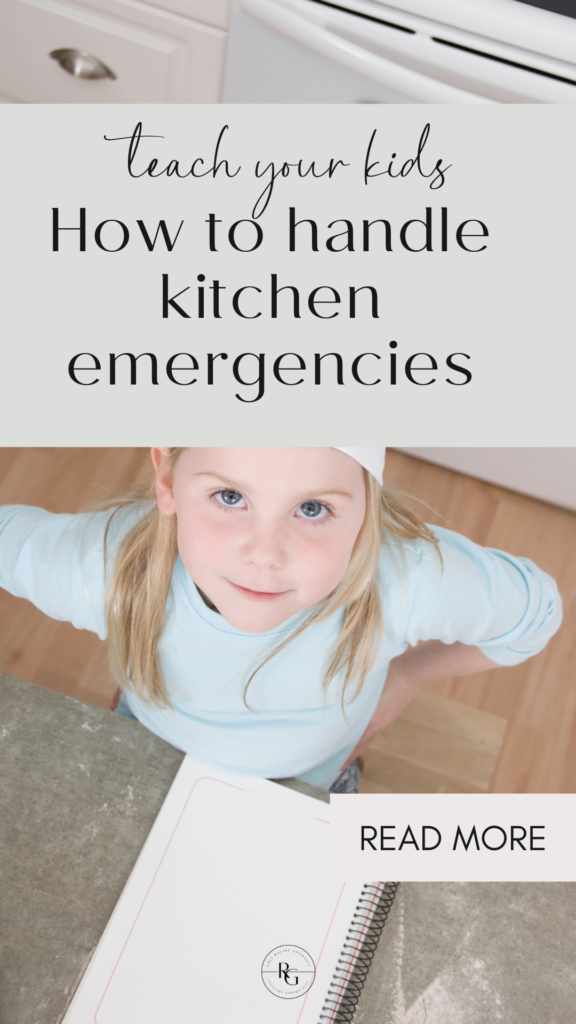
You and your kids can handle kitchen emergencies
It’s always stressful to see our kids take risks, and it’s terrible to see them get hurt. However, if you’re prepared for kitchen emergencies, potential kitchen accidents don’t have to scare you, and your children will be on their way to success in the kitchen.
Of course, the best way to deal with kitchen accidents is to prevent them. Teach your children how to use kitchen tools properly and safely. Encourage them to practice, so their motor skills improve and injury becomes less likely. Let the kitchen be a place where they practice paying attention and taking their time.
When you teach your kids the basics on how to handle kitchen emergencies and help them be at home in the kitchen, you’re introducing them to a safe, productive pastime that opens the doorway to a lifetime of food, health, creativity, and community.
Let’s connect!
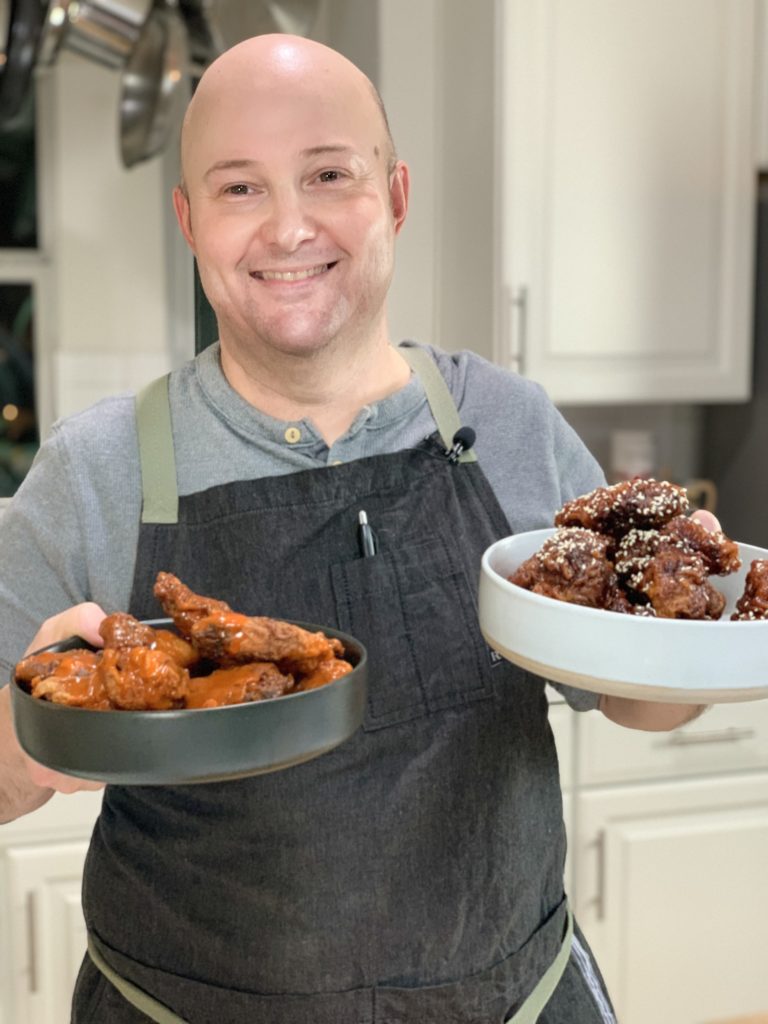
| Are we friends on social media yet? Come follow along for more kitchen tips and inspiration. You can find me on Instagram @chef.rafael.gonzalez and on Facebook, Chef Rafael Gonzalez. Hungry for recipes where your kids can actually cook with you? Snag my FREE mini recipe e-book with 5 of the most popular dishes my students cooked with me on the Outschool platform during the height of the pandemic. These recipes have found a cozy spot in the kitchens of many kids and parents and they continue to cook the same meals, 2 years after. You can get your FREE copy right HERE. |
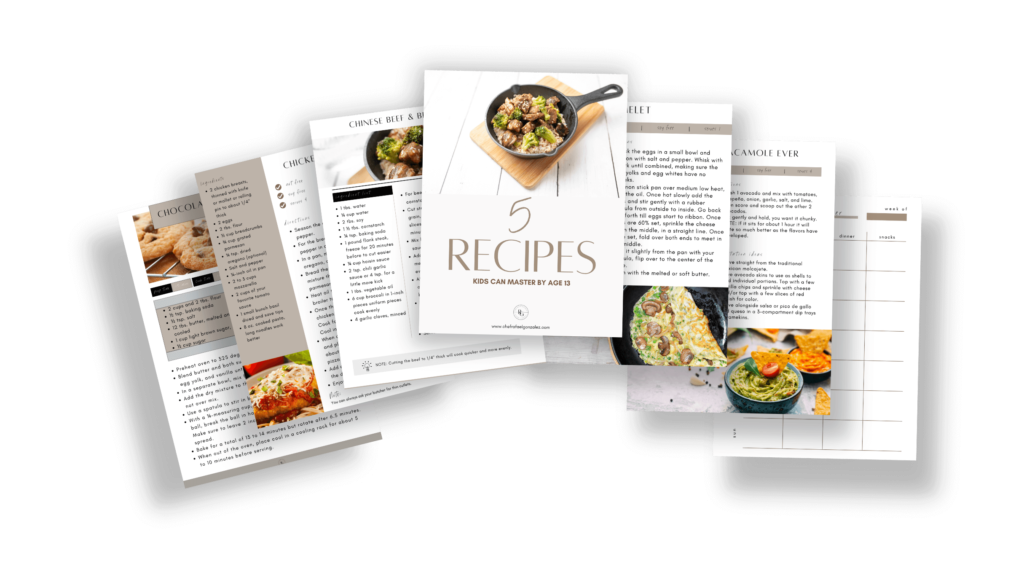
Weeknight meals for the family
Sometimes we just need a quick jump start to get dinner rolling and the family helping. Hey, it can be done! Your kids and your significant other can be helping you out!
You can try these easy weeknight recipes that leave your family looking forward to this “NEW ROUTINE”
Simplified spaghetti bolognese
Arugula Pasta with Mascarpone and Parmesan
Tex-Mex Chicken and Vegetable Fajitas
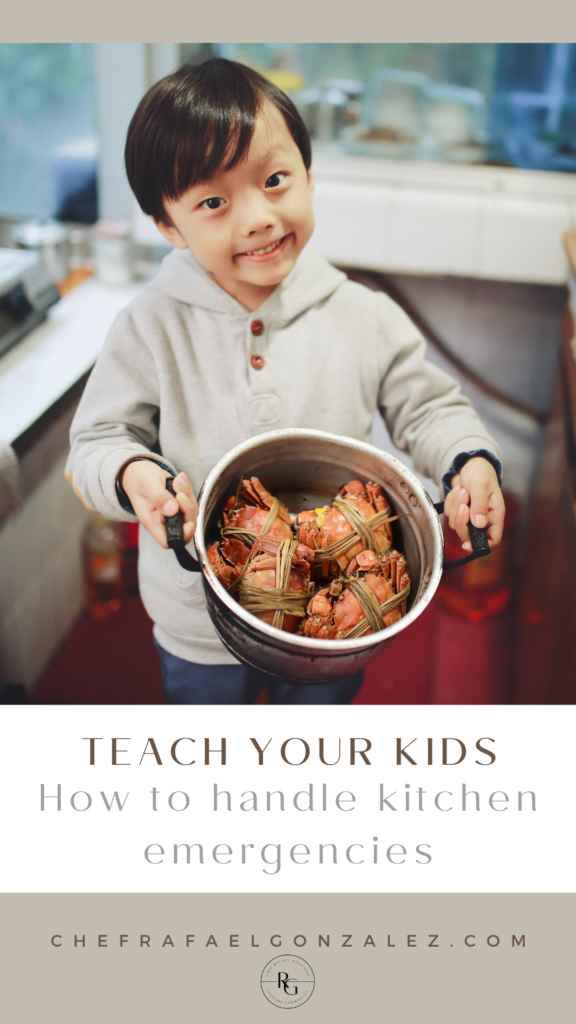
Thank you for this article! It’s so important that parents teach their children practical skills and how to function in emergencies… not enough of this going on these days and the result is a generation of children who are fearful and unsure of themselves in so many ways. Happy to see you covering this topic 🙂
I’m so glad you appreciated this post! I’ve taught many students who were once fearful of knives, stovetops and frying! For good reason! But knowledge is power right? Once they learn safety, the kitchen isn’t such a scary place to be in. Happy to help!